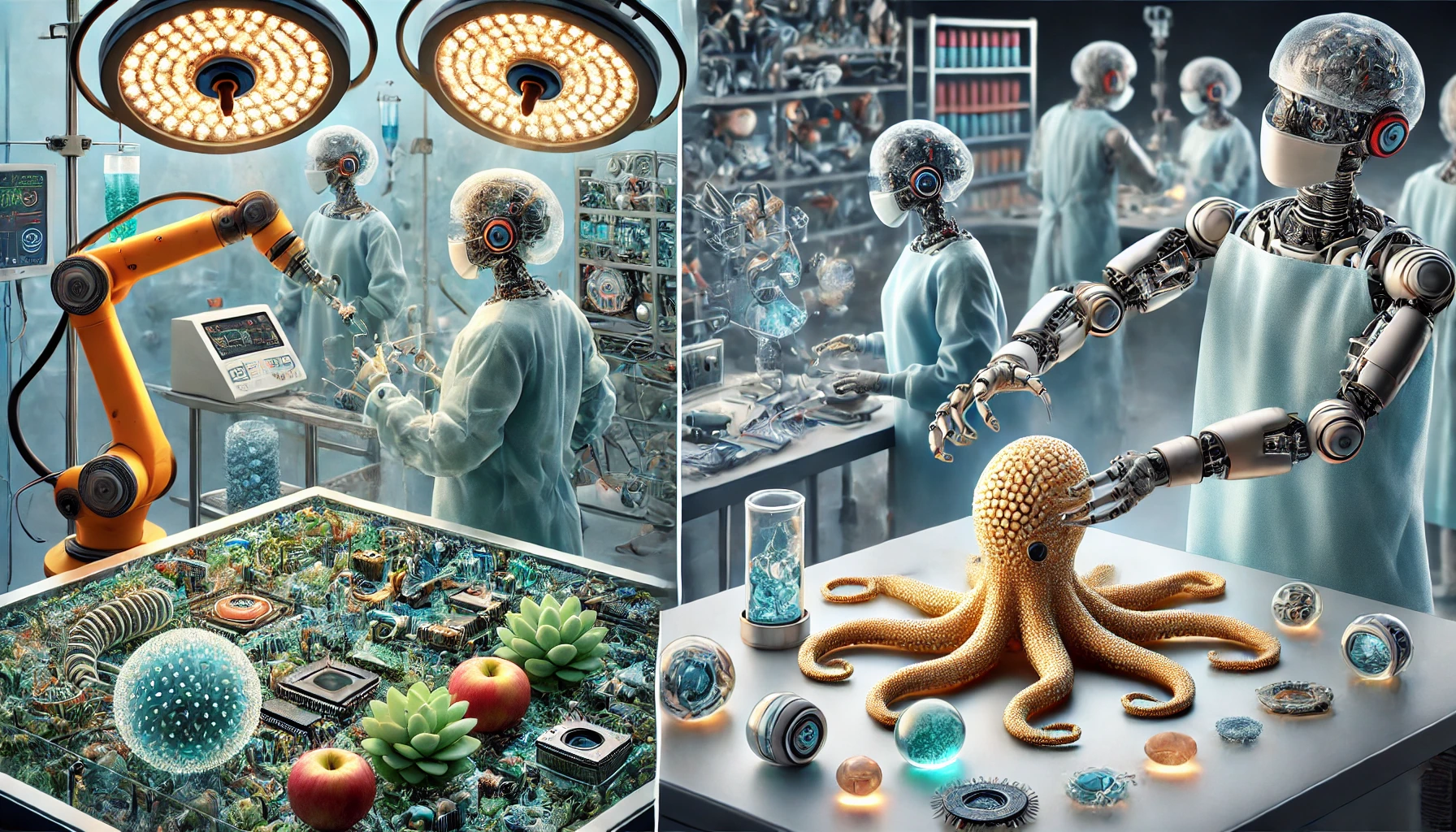The Rise of Soft Robotics: Changing the Game in Medicine and Manufacturing

Soft Robotics: Squishy, but Revolutionary
Imagine robots that aren’t made of cold, hard metal, but soft, flexible materials—almost like living creatures! These are soft robots, and they’re not only transforming how we think about robotics but also reshaping industries like medicine and manufacturing. Inspired by the natural movements of organisms like octopuses, soft robotics combines engineering and biology to create robots that can handle tasks requiring delicacy, flexibility, and a gentle touch.
The Marvel of Soft Robotics in Medicine
In the world of medicine, precision is key. Surgeons perform operations that require the steady hand of a robot, and soft robots have stepped up to this challenge. Unlike traditional rigid robots, which can be clunky and potentially damaging in delicate procedures, soft robots can bend and stretch, making them ideal for surgeries that involve fragile tissues. Imagine a robot performing heart surgery—now imagine that same robot is soft and able to adapt its movements to your body, causing less trauma. No, this isn’t science fiction; it’s happening right now! Surgeons are already using soft robots for minimally invasive surgeries, where flexibility is essential.
Soft Robots on the Assembly Line: A Gentle Touch
Manufacturing floors have long been dominated by large, imposing robots designed to handle heavy tasks. But these machines are often limited in their ability to work with delicate materials. Enter soft robotics. Now, robots with soft grippers can assemble electronics, work with fragile products, or even sort fruit without crushing it. These soft robots are transforming industries like electronics, food processing, and even clothing manufacturing. Why should heavy machinery have all the fun when soft robots can handle tasks with a more nuanced approach? It’s like switching from a hammer to a paintbrush!
Cutting-Edge Technologies Powering Soft Robotics
Soft robotics is powered by groundbreaking technologies that allow these squishy bots to mimic the movements of living creatures. Materials like silicone, gels, and advanced polymers give these robots their unique flexibility. 3D printing technology allows for intricate designs that can be tailored to specific tasks. And then there’s artificial intelligence, which enables these robots to learn and adapt in real-time. Yes, we’re talking about robots that get smarter as they go. The combination of AI and soft robotics is a match made in technological heaven. They are essentially becoming problem-solvers, figuring out the best way to interact with their environment—without breaking anything in the process!
The Future of Soft Robotics: More Than Just Squishy Bots
The future of soft robotics is bright and squishy. As these robots continue to evolve, their applications will expand beyond medicine and manufacturing. Think disaster recovery—robots that can squeeze through rubble to find survivors, or search and rescue missions where flexibility is key. There’s even talk of using soft robots in space exploration, where the ability to adapt to various environments could make them the ideal companion for astronauts. We’re witnessing the beginning of a robotics revolution, and it’s going to be softer than you think.
What’s Next for Soft Robotics? Your Thoughts!
As soft robotics continues to advance, there’s no doubt that its impact on industries like medicine and manufacturing will be profound. But what about other areas? Could soft robots one day be our everyday companions, helping with household tasks or even exploring the depths of the ocean? The possibilities are endless, and we’re only scratching the surface. So, what do you think? Are soft robots the future we’ve been waiting for, or do you have a different vision for the future of robotics?



